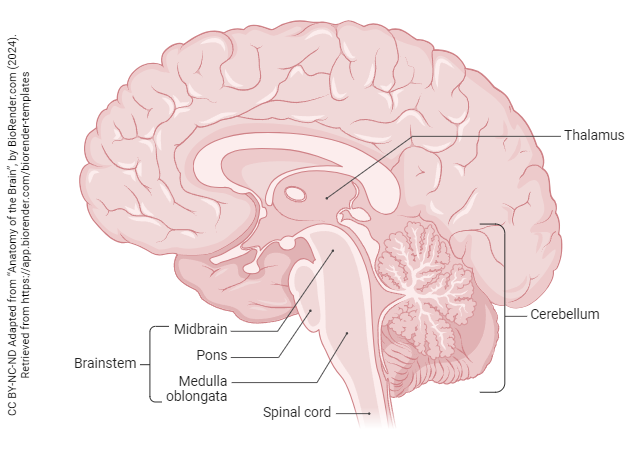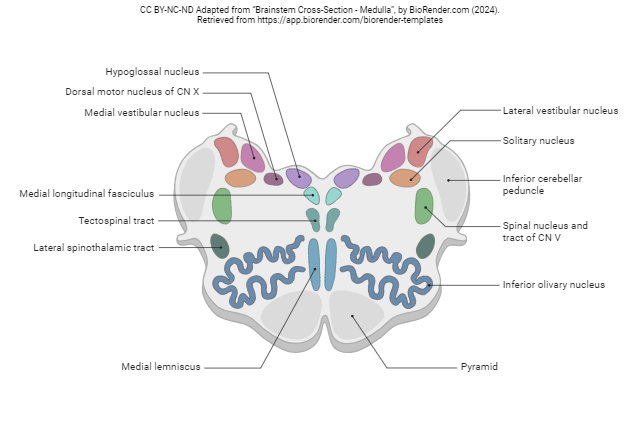The Medulla
Jim Hutchins
Objective 8: Enumerate the major structures contained within the medulla.
Important Locations Objective 8 Video Lecture

The medulla oblongata (usually called by her friends simply “medulla”) is where the core functions of the nervous system reside. Both heartbeat and respiration are controlled from this area, and destruction of the medulla results in death.

Cranial nerve V, uniquely, has four nuclei where the cell bodies of sensory cells reside. We’ve already seen the mesencephalic (“midbrain”) nucleus of V. There is a chief (main) sensory nucleus of V, where light touch, two-point discrimination, and vibration sensations are relayed and a motor nucleus of V which controls the muscles of mastication (chewing). These are found in the pons; in fact, the trigeminal nerve (CN V) is both the largest cranial nerve but also the only cranial nerve that emerges from the pons.
In the medulla, there is a prominent white matter tract with axons (the spinal trigeminal tract) and a nucleus where incoming information synapses before it is relayed elsewhere (the spinal trigeminal nucleus).
Cranial nerves VI (abducens), VII (facial), and VIII (vestibulocochlear) emerge from the cerebellopontine angle, the shallow groove where the pons, cerebellum, and medulla all come together. Accordingly, their cranial nerve nuclei are found near the pons-medulla junction.
The abducens (VI) nucleus contains the cell bodies of motor neurons that control the lateral rectus muscle, which abducts the eye (draws it away from the midline).
The facial (VII) nucleus is primarily motor information for the muscles of facial expression. However, it does carry taste information from the anterior 2/3 of the tongue and information from a tiny patch of sensory receptors around the ear.
Media Attributions
- Anatomy of the Brain © BioRender adapted by Jim Hutchins is licensed under a CC BY-NC-ND (Attribution NonCommercial NoDerivatives) license
- Brainstem Cross-Section Medulla © BioRender adapted by Jim Hutchins is licensed under a CC BY-NC-ND (Attribution NonCommercial NoDerivatives) license

